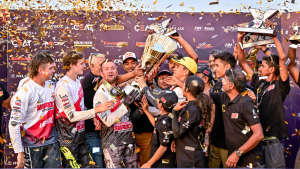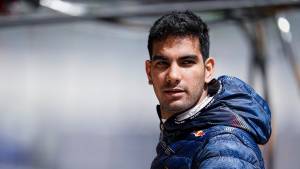Dakar 2019: Limitless
It was a heartbreaking sight. But it also warmed you to your very core. There was a truck, a Dakar 2019 race truck, standing in the middle of a trough, engine idling loudly in the stillness of the Peruvian desert. In front was a dune about eight stories tall, and so very steep, that you would have trouble walking up. And, on the other side, a slope almost as steep. Something we wouldn't know until we had all three of our SUVs stuck, at some point or the other, in that very dune a little later, as we tried to find the easiest path to clear it.
We watched this truck for a good 15 minutes - in the middle of the race - attempt to make the ascent. It would stall and slowly roll back into the trough again, backing up further each time. And it did this, till it finally made it over the slope and to the other side.
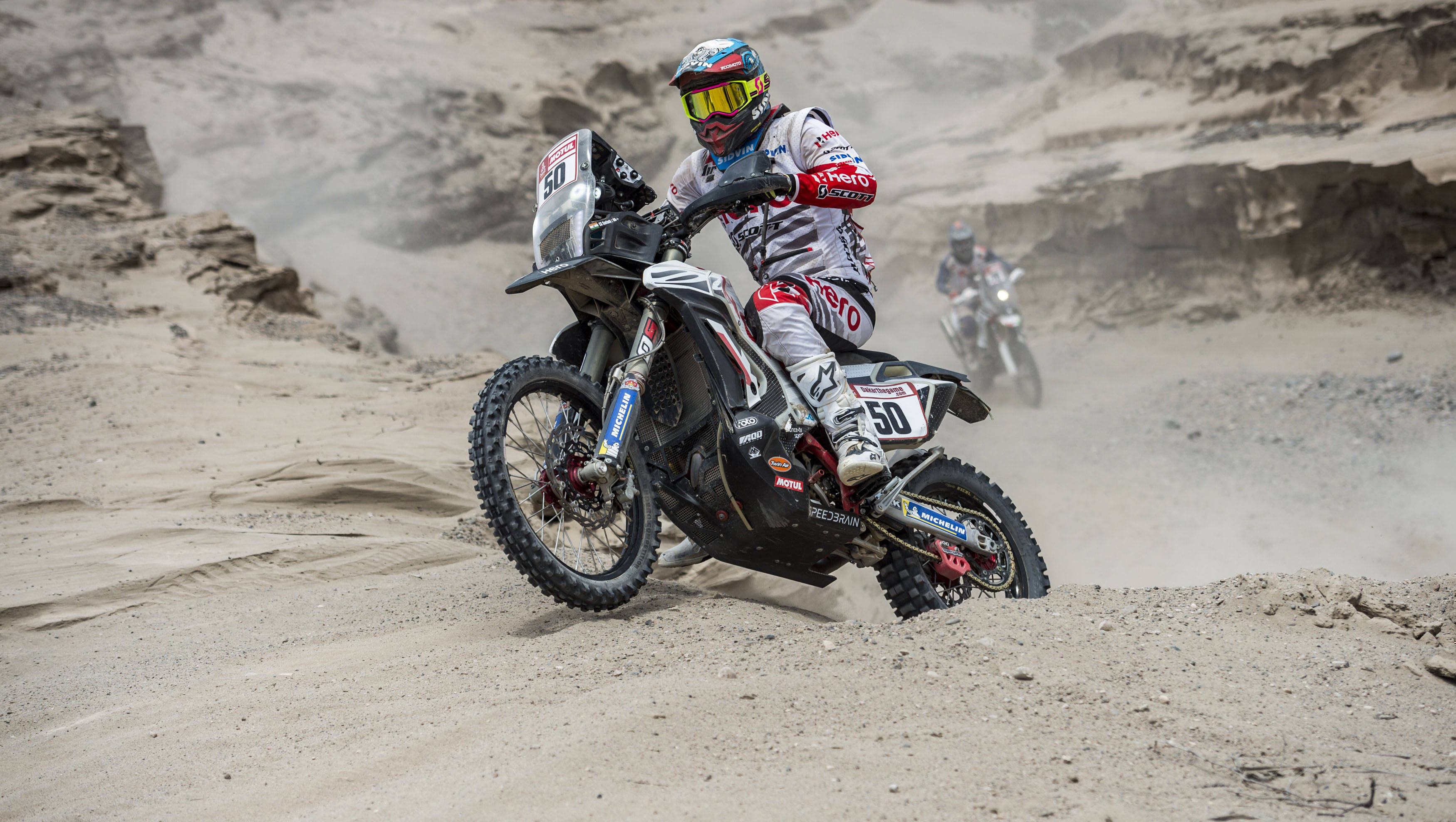 CS Santosh seen giving it his all during Stage 3 of Rally Dakar 2019 from San Juan de Marcona to Arequipa
CS Santosh seen giving it his all during Stage 3 of Rally Dakar 2019 from San Juan de Marcona to Arequipa
The Hero MotoSports team at the Dakar, who I've been following closely ever since they entered the 'World's Toughest Race' embodies, for me, this same spirit. And they aren't alone - almost every team that shows up in Lima, Peru to take the race start has the same sense of relentless grit built into their very genes.
The Dakar, for those who aren't aware, is a legendary race that was born in Africa. Today, the 2019 edition is being held mostly in the Peruvian desert, south of the capital Lima. While the race is run mostly in the sand, it's exactly this sand that lies in wait, slowly catching unsuspecting victims out. Ensnaring them in its trap. Such is the nature of the Dakar.
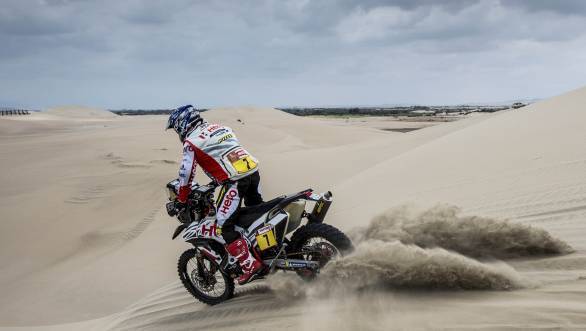 Hero MotoSports rider Oriol Mena tackling the dunes during Stage 1 of the 2019 Dakar
Hero MotoSports rider Oriol Mena tackling the dunes during Stage 1 of the 2019 Dakar
To make it worse, the Dakar's spirit has always been to present an outrageous challenge to absolutely everyone competing in it. To wit, the rally goes 5,000km this year, a smaller distance than the 7,000 to 8,000km it considers normal. It lasts 12 days. Each day, riders, like CS Santosh, Joaquim Rodrigues and Oriol Mena of the Hero MotoSports team, will cover vast distances. Stage 3, the one we tracked yesterday, for instance, marks almost 800km, with the riders actively racing 331km through rocks, sand, fog, and the infamous fesh-fesh - extremely thin, slippery, treacherous sand. But it gets better - Stages 4 and 5 are 1,350km of riding, with 750km of competitive sections. And, over the course of these two marathon stages, the riders are allowed no help at all - no mechanics, nothing. They don't just have to race, they have to survive.
And that's why, when you see this truck make that climb again and again and again, you don't think the driver and his co-pilots are the slow guys. Instead, it makes you think about how far a human being will go to achieve his goal. And the Dakar, let's be clear, is one of the most extreme of goals.
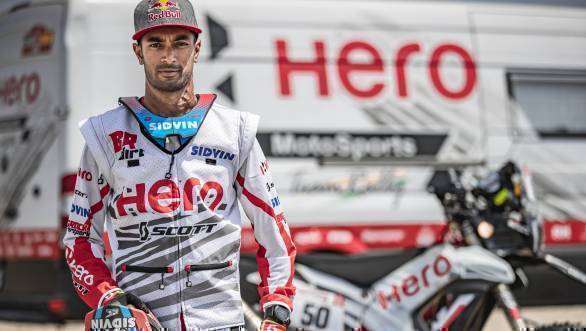 Grit, determination, and focus - the three qualities absolutely vital to surviving the Dakar Rally. CS Santosh has proved time and again, that he has all three in good measure
Grit, determination, and focus - the three qualities absolutely vital to surviving the Dakar Rally. CS Santosh has proved time and again, that he has all three in good measure
CS Santosh, the Indian rider in the Hero MotoSports team for example, is pretty clear that he spends the entire year getting ready for the Dakar. And come January, he has to make it count. In 2016, his Dakar ended on Stage 4. That's one full year of preparation, training and hard work gone down the tubes. Did it ever make him think that the challenge wasn't worth pursuing? Not even a little bit. Santosh - no stranger to setbacks - returned home to Bangalore in mid-January that year and started to train, ride, and prepare mentally for the Dakar 2017.
And that's what amazes me about this event. I've never seen anything on this scale in any sport. Whether you talk about the food in the competitor's camp, the number of helicopters in the air, the sheer severity of the stages, the unimaginable distances covered - every aspect of the Dakar is insane.
And every year, stories emerge of heroes. Of personal victories that elevated mere humans into people who looked at an impossible challenge and conquered it with sheer, bull-headed will.
I often wonder why these men and women show up and punish their machines, their bodies and their bank balances at the Dakar. But just come and watch it once for yourself. And you'll understand.
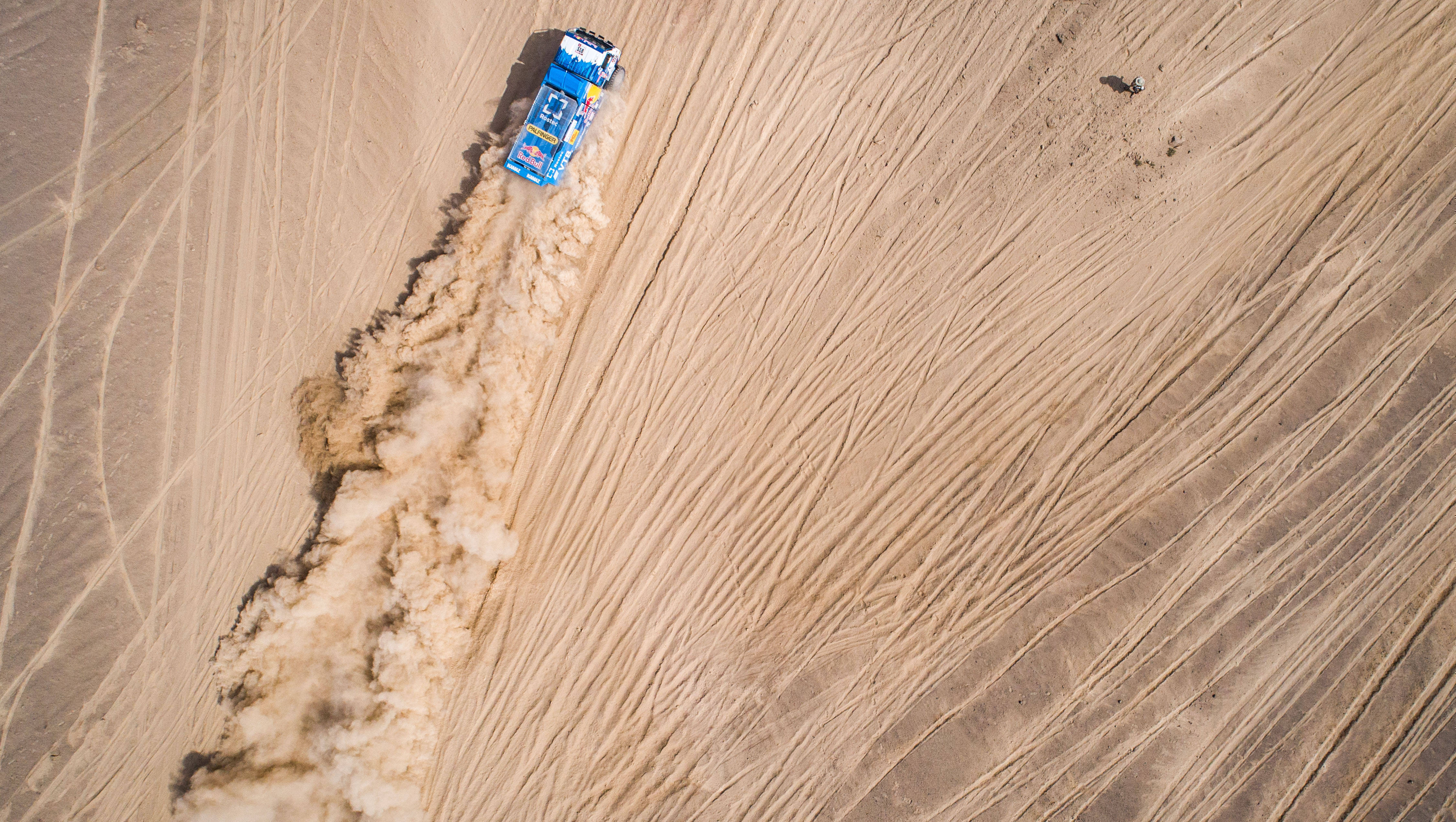 The Dakar has such vast, expansive, seemingly endless terrain, that even massive rally trucks look tiny
The Dakar has such vast, expansive, seemingly endless terrain, that even massive rally trucks look tiny
See, the human race, the civilisations we've built, everything we've accomplished has been because we took on extreme problems and found solutions to them. The Dakar, is a gigantic motorsport event, that encapsulates that exact spirit.
They do get one thing wrong every single year though. They say to compete in the Dakar is to "Race the Limit." That's stupid. How can they race something they haven't found yet?
After all, the limit is where you decide your strength, your will, your resolve ends. But as the Dakar shows every year, when you're pushed to a place where you wonder if the task is actually possible or not, that's when you learn about how much strength you really have.
That truck? As we unstuck ourselves and carried on to our hotel for the night, it was flinging itself manfully at another dune. All by itself, without an audience, without pause. And the next morning, there it was in the camp, gleaming like a newly born machine.
If you don't push your limit, I promise you, you'll find it. When you push limit, however, you'll find yourself.
Watch the video here:
